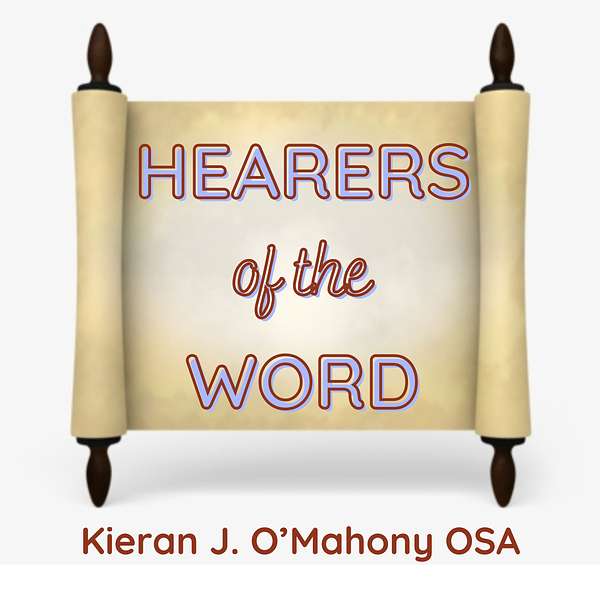
Hearers of the Word
Hearers of the Word
The Cosmic Christ: a reflection on Colossians 1:15-20
A reflection on Colossians 1:15-20, written and spoken by Kieran J. O'Mahony OSA.
Gentle piano music to close the meditation
John’s Lane
D08 F8NW
13 July 2025
Welcome
With your permission, I’m going to reflect on the second reading for today — poetic, allusive and mysterious. You will certainly have felt that when your heard the words.
Christ Jesus is the image of the unseen God
and the first-born of all creation,
for in him were created
all things in heaven and on earth
Topic
We are perhaps not used to thinking in such terms. The reading from Colossians invites us to stretch our imaginations and to think widely and deeply about the place of our faith.
Steps
Like many people who study the Scriptures, I think St Paul did not write this letter. it belongs to a later generation and the letter serves to bring Pauline teaching up to date in the wider context of philosophies and science of the day.
This is the very task we have to undertake as well. Our worldview has expanded as well. We now think automatically in terms of evolution and the long emergence of humanity. Even if we are not experts our imagination is stirred by the new cosmology, the Big Bang and the extraordinary age of the universe. The figure of 13.8 billion years is often given. If that were not enough, there is the sheer size of our expanding universe. A few years back, I googled how many galaxies there are. The answer then was between 100 and 200 billion, approximately. The current common opinion seems to be two trillion, a figure which involves 12 zeros. Breath-taking stuff.
As believers, we are try to join up our faith with our understanding of the world at large. Here we are greatly helped by some documents in the New Testament such as the letter to the Colossians. Usually, when we think of Jesus, we most often think of him as a first-century Jewish prophet and messiah, for us the Son of God. We not not usually think of Jesus is cosmological terms. To repeat the opening phrase:
Christ Jesus is the image of the unseen God
and the first-born of all creation,
for in him were created
all things in heaven and on earth.
Raymond Brown, the really great American biblical scholar, reacted by asking how within fifty years (at the latest) did Christians come to believe that about the Galilean preacher who was crucified as a criminal. (NT Introduction 617) It would take us beyond a Sunday homily to give a reply; suffice to say that the key is “resurrection” which in those days was viewed not simply as a revival but as a kind of cosmic event.
Three Christian writers have brought forward our understanding and it may be worthwhile to name all three.
The first was a Jesuit priest, Teilhard de Chardin, a palaeontologist by training, early to mid-twentieth century. In his still remarkable writings, Teilhard tried to integrate evolution and Christian faith. He was a kind of visionary, who spoke of cosmogenesis, biogenesis, noogenesis and Christogenesis.
The second is a figure perhaps unknown generally: Beatrice Bruteau. She is described as an inter-spiritual pioneer, who built on the teaching of Teilhard, combining quantum physics and relationality. In her view, God as Trinity is relationship; matter is relationship – everything is connected; human life is relationship.
The third figure is a contemporary, a Franciscan sister called Ilia Delio. Ilia Delio specialises in the area of science and religion, with interests in evolution, physics and neuroscience and the integration of these with faith and theology.
All three are trying to help us reflect on faith in our contemporary understanding of evolution and the cosmos.
Conclusion
You may think I’m veered off into the really esoteric but I hope not. I’m still trying to connect to the core vision in today’s second reading.
Christ Jesus is the image of the unseen God
and the first-born of all creation,
for in him were created
all things in heaven and on earth.
Such expansive and thrilling visions can help us in three ways:
Pastorally: to be able to speak to our times in the language of our day.
Spiritually: to be able to connect with the great issues of the day
Theologically: faith does not invite us to live in two worlds.
On the contrary, there is only one, quite wonderful world.